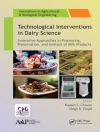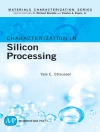Given the uncertainties in future food and nutrition security due to climate change compounded with an increasing global population, sustainable development is essential for the survival of much of the world’s population. Besides the conceptual evolution of food and nutrition security, exploration of new scientific areas aids in reshaping our knowledge of nutritional requirements, and innovation of novel technologies can be utilized to tackle production and security issues in sustainable ways.
Emerging Solutions in Sustainable
Food and Nutrition Security provides comprehensive and up-to-date coverage of the current problems and issues, emerging ideas, and pragmatic solutions in sustainable nutrition. The book is designed to promote an understanding of the fundamentals and changing landscapes of food systems, nutrition
, and environmental sustainability. Emerging issues such as the growing importance of traditional foods in improving nutrition security, the exploration of biodiversity to promote food diversity, the sustainable management of current agroecosystems, the progress made in utilizing biotechnology to enhance crop production, the utilization of bio-fortification and food fortification as means of nutritional management, the latest research advancements in mineral research, and the functional foods are comprehensively addressed.
For researchers seeking a deeper insight into sustainable nutrition security and the current technical developments, these chapters cover current technologies across the four pillars of food security, food availability, food accessibility, food utilization
, and food stability, and provide a platform for critical scientific thinking in the field of food security, safety
, and environmental sustainability in conjunction with Sustainable Development Goals such as Zero Hunger and Climate Action.
Tabela de Conteúdo
Chapter 1: Brief account on the history and conceptual evolution of nutrition security: Past, Present and Future.- Part I: Traditional Foods and Biodiversity to Achieve Nutrition Security.- chapter 2: Traditional Foods and Foods with a Tradition: it’s not the same.- Chapter 3: Traditional foods and associated Indigenous Knowledge Systems and its role in nutrition security in Mongolia.- Chapter 4: Current status of edible insects in the context of dietary transition in Western French Africa: A case study from Benin.- Chapter 5: The decline of Agrobiodiversity: the process of crop improvement, consequent homogenization, and aftermath.- Chapter 6: Aquaculture: Contributions to Global Food Security.- Part II: Environmental Concern and Food Safety.- Chapter 7: Carbon Sequestration in Agroforestry and Horticulture Based Farming Systems: Mitigating climate change and advancing food and nutrition security.- Chapter 8: Pesticide residue and food safety: Retrospection and prospects.- Part III: Biotechnological Advancement and Sustainable Nutrition Security.- Chapter 9: Plant breeding strategies and methods for Food Security: Review on the Technology.- Chapter 10: Crop Breeding and Biotechnological Advances towards Nutrition and Environment Security.- Part IV: Micronutrient Concern.- Chapter 11: The Micronutrient Zinc in Human Health and Disease.- Part V: Functional Foods.- Chapter 13: Functional food in promoting health: Global perspective.- Chapter 14: Medicinal properties of traditional foods and associated indigenous knowledge system: A case study of the Himalayan region, India.- Chapter 15: Ayurveda and Traditional foods to supplement nutrition in India.
Sobre o autor
Dr. Sampat Ghosh is a Research Professor at the Agriculture Science and Technology Research Institute of Andong National University in the Republic of Korea
Dr. Amrita Kumari Panda is an Assistant Professor in
the Department of Biotechnology at Sant Gahira Guru University in Ambikapur, India
Prof. Chuleui Jung is a Professor in the Department of Plant Medicals at Andong National University in Andong, Republic of Korea
Prof. Satpal Singh Bisht is a Professor in the Department of Zoology at Kumaun University in Uttarakhand, India












